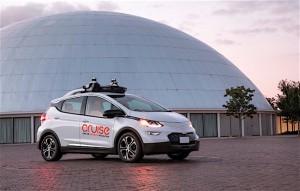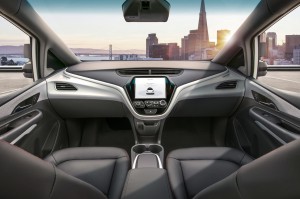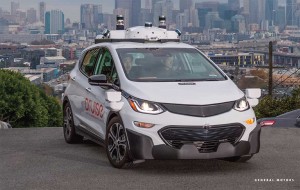Months before it was to unleash a fleet of self-driving taxis in San Francisco, General Motors and its autonomous tech subsidiary, Cruise Automation, put the brakes on the project because it just wasn’t going to be ready.
The company had planned to have the streets of San Francisco buzzing with a fleet of Chevy Bolt robo-taxis by the end of this year. However, the company felt that it needed to more testing and validation before it could deploy driverless vehicles.
Ammann noted that the company specifically choice “the city by the bay” because its traffic patterns are 40 times more complex than the average city. To borrow a cliché from another large city, if Cruise’s autonomous vehicles could make it there, they could make it anywhere.
(GM’s Cruise Unit Gets Additional $1.15B in New Funding)
No timetable was set for when the taxis would find their way to the roads unsupervised by human occupants. In the meantime, the company plans to expand the number of vehicles in the testing and validation stage beyond the current 180.
The company needs to expand not only the number of vehicles to help get data, but also support systems, in particular chargers. One of the limitations of the current fleet is the lack of charging capability necessary to get test vehicles out on the roads for more than a few hours before needing charging.

GM’s Cruise self-driving car unit received a new round of funding: $1.15 billion led by T. Rowe Price, bringing the total raised to $7.25 billion.
In short, Cruise needs more time to test in San Francisco before it can deploy there, Ammann wrote. Ammann also said GM wants to build trust in Silicon Valley before it launches its vehicles there.
The company plans to educate the community about the changes they’ll be seeing in the months ahead, such as an increased number of vehicles, more charging stations, etc., and what it means for them in the long run, i.e. safer roads, fewer gas-powered vehicles on the road, etc.
‘We will deploy with our community, not at our community,” wrote Dan Ammann, former GM President and now Cruise CEO, on Medium.com, announcing the delay.
(SoftBank invests $2.25 billion in GM Cruise.)
That education started with a full-page ad in the San Francisco Chronicle today, outlining what’s going on with Cruise and some of the aforementioned information.
GM and Cruise wouldn’t be the first with driverless taxi service, as Waymo’s fleet of autonomous cabs are roaming the streets of metropolitan Phoenix right now. The service operates in a 100-square-mile zone covering four Phoenix suburbs: Chandler, Tempe, Mesa and Gilbert.
The company has been testing its vehicles in the area since 2016, including offering free rides earlier this year to generate some goodwill for autonomous vehicles.

GM and Cruise want more time to ensure the autonomous Bolt functions well in one of the country’s toughest cities for traffic congestion: San Francisco.
However, those areas aren’t dense urban areas like San Francisco. Ammann wrote in his blog post that “the essential building blocks” for Cruise are in place. The company simply needs more scale to ensure the vehicles perform as they should.
This means having enough qualified people to run the program, such as the 1,500 employed by Cruise, as well as the capital needed to ensure the program is funded appropriately. In this case, the company has $7.25 billion from investors in place to make certain cash isn’t a problem.
(GM asking for federal approval to launch driverless robe-cabs in 2019)
“…Having our cars running many more miles on the road will further accelerate our rate of learning and safety validation,” Ammann wrote. “It will also give us crucial operational learnings from running a larger scale fleet and a larger scale ride service, which we currently operate for our employees.”

